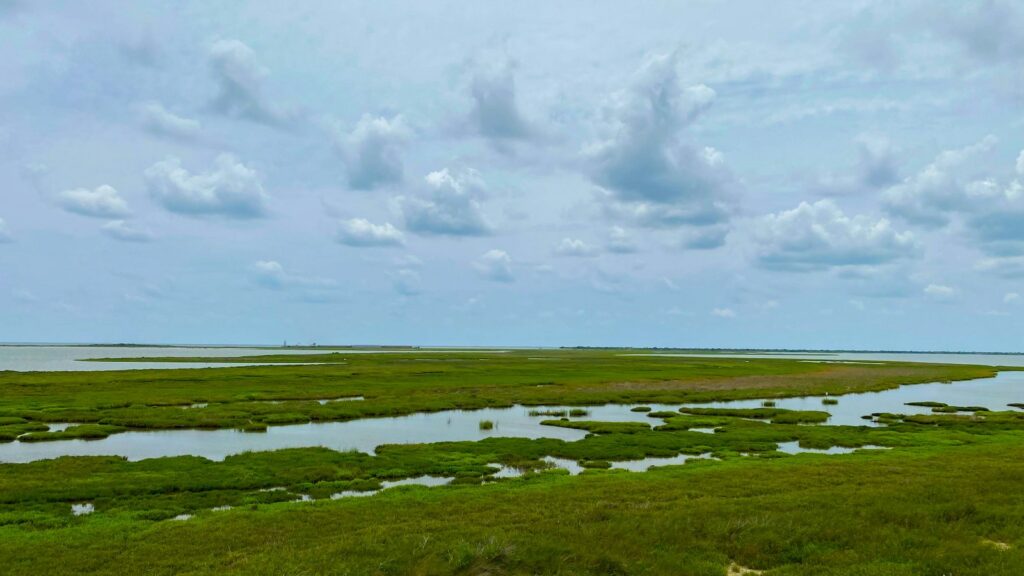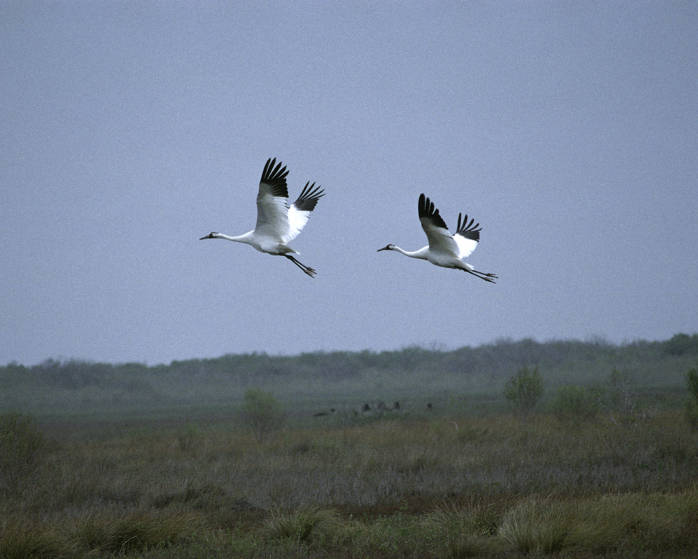A Journey through Nature and Time

Nestled along the Texas Gulf Coast, the Aransas National Wildlife Refuge stands as a testament to natural beauty and historical significance. Established in 1937 as a haven for wildlife, it spans more than 115,000 acres and serves as a critical sanctuary for a myriad of bird species, including the endangered whooping crane. This refuge marries rich biodiversity with an intriguing past, making it an invaluable location for both ecological preservation and historical insight.
Over the years, Aransas has evolved into a hub for conservation efforts and educational endeavors. Visitors can experience the confluence of history and nature through guided tours that shine a light on the crucial role the refuge has played in wildlife protection. Educational programs offered on-site provide insights into the intricacies of coastal ecosystems and emphasize the importance of safeguarding our natural heritage for future generations.
The Aransas National Wildlife Refuge also offers glimpses into the cultural history of the region. From the Karankawa people, who once inhabited the coastal prairies and marshes, to the legacy of conservation efforts initiated by visionaries of the early 20th century, the refuge’s past is as vibrant and diverse as the ecosystems it supports. It stands not only as a sanctuary for the whooping cranes and other wildlife but also as a living museum where visitors can connect with the land and understand the pivotal moments that have shaped its conservation history.
Foundation of the Refuge
The Aransas National Wildlife Refuge boasts a rich tapestry of history and ecological significance, rooted in thoughtful legislation and unique geological characteristics.
Legislation and Protection
Established: 1937
Primary Goal: Conservation of wildlife and habitat
Significant Species: Whooping Cranes
Legislation marked the inception of the Aransas National Wildlife Refuge to safeguard crucial habitats, particularly for the endangered Whooping Crane. It was officially formed through federal action, demonstrating foresight in environmental conservation and a dedication to protect America’s natural heritage.
Geological Formation
- Formation Period: Pleistocene Epoch
- Landscape: Coastal prairies, tidal flats, and salt marshes
- Characteristic Feature: Barrier islands
The refuge is a spectacle of geological evolution, formed during the last Ice Age and characterized by a diverse mix of ecosystems. This region progressed through centuries of sediment deposits and fluctuations in sea levels, carving out a sanctuary that supports an array of wildlife.
Ecological Significance
The Aransas National Wildlife Refuge is a crucial sanctuary for a vast array of species and serves as a key site for conservation practices. It offers a haven for both endemic and migratory species, underlining its importance in the global ecological network.
Flora and Fauna
The diversity of habitats within the refuge supports a rich assortment of plants and animals. Key Species within the Aransas National Wildlife Refuge include:
- The whooping crane (Grus americana), one of the most critically endangered bird species in North America, relies on the refuge for its winter habitat.
- American alligators (Alligator mississippiensis), which populate the refuge’s freshwater marshes and ponds.
Plant Life within the area showcases a variety of coastal prairie, marshland, and oak motte:
- Seagrasses that are vital for the coastal ecosystem, helping to stabilize the soil and support marine life.
- Live oak (Quercus virginiana) communities, providing essential cover and food sources for wildlife.
Conservation Efforts
The refuge implements several Conservation Programs to protect its precious ecosystems. These include:
- Habitat restoration projects to maintain biological diversity.
- Controlled burns to manage invasive plant species and promote growth of native vegetation.
- The whooping crane conservation program, designed to monitor and increase the population of this endangered species.
Partnerships and Community Involvement are critical aspects of conservation at Aransas National Wildlife Refuge:
- Collaboration with local and national organizations enhances the effectiveness of ecological protection measures.
- Visitor education programs help raise awareness about the importance of conservation and the role of protected areas.

Historical Narratives
The history of the Aransas National Wildlife Refuge is not only written through its ecological transformations but also through the visible cultural and historical landmarks that exist within its boundaries.
Historical Landmarks
St. Charles Bay Lighthouse: The remnants of this historic lighthouse stand as a silent observer to the refuge’s past. Constructed in the late 1800s, it guided mariners through the treacherous waters near the bay before it was rendered obsolete by technology.
Cultural Heritage
Karankawa Indians: The Aransas Refuge once served as the hunting and fishing grounds for the Karankawa Indians. Artifacts such as arrowheads and pottery shards have been discovered, providing insight into their way of life.
Ranching Era Structures: Several structures from the ranching era remain, including the historic Blackjack Peninsula. Ranching was prevalent before the establishment of the refuge, leaving a legacy of human interaction with the land.
Educational Opportunities
Aransas National Wildlife Refuge invites visitors to immerse themselves in nature and learn about the region’s rich history through various educational programs. These opportunities are designed to enhance visitor experience and promote conservation awareness.
Guided Tours
- Experience the Refuge: Expert guides lead groups, providing detailed insights into the ecosystem and historical significance of the area.
- Wildlife Exploration: Tours focusing on the identification and behaviors of local wildlife, such as the whooping crane, are available.
Visitor Programs
- Conservation Workshops: Programs that emphasize the importance of environmental stewardship and practical conservation methods.
- Historical Lectures: Sessions hosted by historians who discuss the refuge’s past, including indigenous and colonial narratives.
Visitor Experience
Visitors to Aransas National Wildlife Refuge can engage in a variety of activities designed to connect them with nature and the region’s rich history.
Recreational Activities
- Hiking: Travelers can explore over 40 miles of trails, including the popular Rail Trail for an easy stroll or the more challenging Big Tree Loop.
- Fishing: Enthusiasts are welcome to fish at designated areas like St. Charles Bay, following state regulations to ensure sustainable practices.
- Guided Tours: Specialized tours provide deeper insight into the refuge’s ecosystem and history, with options often available at the visitor center.
Wildlife Observation Tips
- Best Times: Early morning and late afternoon are prime times for viewing wildlife, when animals are most active.
- Equipment: Binoculars and cameras with zoom lenses enhance the wildlife watching experience.
- Stay Patient: Wildlife spotting requires patience; settling quietly at observation decks increases chances of sightings.




